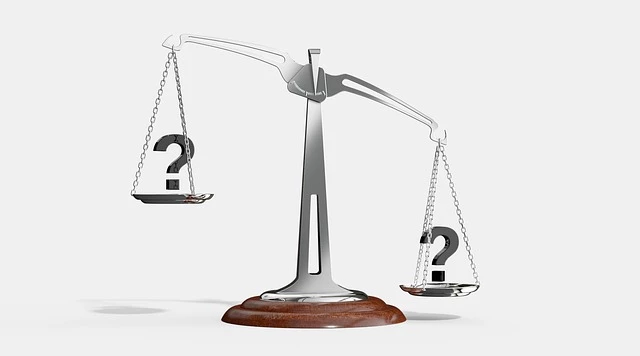Total Asset Turnover Calculator
Analyze how much revenue a company can generate using its assets.
Table of Contents
- What Is Total Asset Turnover?
- How to Calculate Total Asset Turnover?
- The Importance of This Metric
- What Is a Good Total Asset Turnover Ratio?
- Asset Efficiency vs. Profitability
- Dangers of Over-Optimizing Asset Turnover
- Short-Term vs. Long-Term Assets
- The Role of Debt in Total Asset Turnover
- Related tools

If you’d like to buy stock and need a solid parameter to compare the performances of various companies, then total asset turnover would be a good metric.
Also, if you’re running a business and routinely measure how much your assets create revenue, then you’d benefit from knowing this ratio. It’s an indicator that’s specific to individual business sectors, so it would give you a good idea of where you rank among your peers.
You can do the math manually or use the total asset turnover calculator from CalcoPolis. The procedure is actually pretty simple either way! Here’s how it works.
If you wish to quickly take a glimpse of how well a company is utilizing its assets, you may use our roa calculator.
What Is Total Asset Turnover?
Total Asset Turnover Ratio is a metric that measures the effective utilization of assets. In simpler terms, it’s an indicator that shows whether a company is making the best of its properties.
Every dollar invested in any business should generate revenue, both in the short and the long term. Therefore, leaving capital assets idle and collecting dust would decrease the efficiency of a company.
Contrary to that, utilizing every asset in quick cash conversion cycles (CCC) maximizes the efficiency of capital utilization.
As an example, a shop that keeps a full inventory and only manages to sell a few items isn’t operating too efficiently. Another shop that keeps half of that inventory and makes double the sales would naturally have much better figures.
How to Calculate Total Asset Turnover?
Calculating the total asset turnover ratio is pretty straightforward.
First: you should find the average yearly assets of the company.
Average assets = (assets at beginning of year + assets at end of year ) / 2
Then, read out the total sales from the income statement, and use this formula:
Total asset turnover = revenue/average assets
To further clarify, let’s use a couple of hotel’s balance sheets:
Hotel A has average assets in expensive real estate amounting to $2 m. But the season is measly, so the revenues are only $600 K.
Hotel B has a tall building in a remote area, so its capital is only worth $500 K, while its revenues exceeded $1 m.
The total asset turnover for hotel A = 600,000 / 2,000,000 = 0.3
The total asset turnover for hotel B = 1,000,000 / 500,000 = 2.0
Clearly, the fancy hotel A isn’t doing as well as the practical hotel B. The details and consequences can be further analyzed using other automated financial tools from CalcoPolis.
The Importance of This Metric
This metric can be quite helpful in analyzing any business. You can easily see how any company ranks among its peers when it comes to how effectively it manages its assets.
This, in turn, shows how well the company formulates and implements business strategies. Additionally, the return on investment (ROI) is strongly tied to the asset turnover ratio. Thus, you can assess how quickly you can expect to see profits coming out of the current capital.
Acquisitions, stock purchases, and sizing up the competition are all matters that benefit from knowing the total asset turnover of a company, as well as its peers in the same sector.
It’s worth noting that the total asset turnover ratio is calculated over the whole year. Thus, it’s a fair and comprehensive assessment of a company’s performance throughout a fiscal or calendar year.
What Is a Good Total Asset Turnover Ratio?
Typically, we’d like to see large figures for the total asset turnover ratio. In fact, it’s the higher, the better because it indicates the company can generate more revenue from its available assets.
There are a few limitations, though, namely, when a company buys or sells huge chunks of its fixed assets.
Most companies acquire more land, buildings, equipment, or inventory as they scale up. During these growth spurts, the total asset turnover ratio would appear to be lower. That wouldn’t reflect stagnation or reckless investment. On the contrary, it’s a positive indicator of success.
The flip side of that is a massive burning of capital in case the company is facing cash flow issues. The total asset turnover ratio would be stellar, and that might mislead a potential investor.
On rare occasions, some companies could also massage their ratios a little by undervaluing their inventories or overvaluing their revenues. This is a bit hard to catch, but other indicators would show discrepancies.
For all the previous reasons, we always recommend reading the total asset turnover ratio over a few years rather than getting a single value only.
Asset Efficiency vs. Profitability

Diving deep into the financial dynamics of a business, there are two main pillars one should grasp: asset efficiency and profitability. It's a bit like comparing the efficiency of a car's engine to the distance it can travel on a single tank of gas.
Firstly, think of the average total assets of a company as its resources or tools. It's like having a toolbox, but we have buildings, machines, and inventory instead of hammers and nails. How well a company uses these tools to make sales is gauged by our asset turnover ratio calculator.
This calculator essentially uses net sales and divides it by those average assets. The result? A financial ratio that tells us how many times a company uses its assets to generate sales over a particular period. So, if you're thinking about how effectively your assets are working to bring in money, this is your go-to metric.
Now, onto profitability. It doesn't matter if a business sells a lot if it spends even more to make those sales happen. Profitability zeroes in on how much money is left after all expenses are paid. So, while our bookstore might have high sales, if the rent, salaries, and other costs are sky-high, the profits could be minimal.
In the grand scheme of things, asset management plays a pivotal role. It's not just about owning assets but deploying them judiciously to ensure maximum revenue. The higher the asset turnover ratio, the better a company is at efficiently using its assets to generate revenue. But remember, high efficiency doesn’t always equate to high profitability.
It's a balance. While a business might be adept at using assets to produce sales, it’s essential to ensure those sales translate into profits. Only then can a company truly claim to have struck the golden balance between asset efficiency and profitability.
Dangers of Over-Optimizing Asset Turnover
Sometimes too much of a good thing can be bad. This rings particularly true for the asset turnover ratio formula. While aiming for a higher asset turnover ratio sounds like a good idea, over-optimizing can lead to unseen pitfalls.
For instance, a business might be tempted to reduce its asset base dramatically to achieve a better-looking ratio. On the surface, using fewer assets to achieve the same or even more total net sales appears efficient. However, cutting assets too deeply might leave the business ill-prepared for future challenges or expansion opportunities. A situation could arise where there’s a sudden spike in demand, and without adequate assets in place, the company can't meet it.
Moreover, striving for a too-high asset turnover might lead to sacrificing long-term growth for short-term gains. This brings us to the next topic...
Short-Term vs. Long-Term Assets

Imagine a company's assets as a forest, with some trees growing quickly and others taking their time but providing sturdier wood. Short-term assets, like inventory or accounts receivable, are those quick-growing trees. They're converted into cash or used up within a year. Meanwhile, long-term assets, like machinery or buildings, are those sturdy trees that serve the business for many years.
The asset turnover ratio measures efficiency across both types. However, the fixed asset turnover formula specifically focuses on long-term assets. It's crucial to strike a balance. Over-relying on short-term assets might give a good asset turnover ratio in the immediate term, but it might leave a company vulnerable in the long run without the stability of long-term assets.
We recommend you calculate the asset turnover ratio for a few hypothetical scenarios to better understand the difference.
The Role of Debt in Total Asset Turnover
Debt, often seen as a double-edged sword, plays a significant role in the asset dynamics of a business. Borrowing money allows a company to make asset purchases without immediately spending its own cash. This can inflate the asset base, which, when plugged into the asset turnover ratio formula, can lead to a lower asset turnover ratio.
While debt can support the acquisition of more assets and potentially increase sales, it comes with interest costs. If the assets purchased with debt don't contribute adequately to net sales, the company might end up with a poor ratio and increased costs.
In essence, while debt can be a powerful tool to enhance asset efficiency, it's a game of strategy that must be played with precision.
Related tools
In order to dive deep into this topic, you may find the following tools helpful. For example, our net operating assets calculator allows you to quickly examine the company's operational efficiency.
If you want to calculate the ending inventory value, you can use our ending inventory calculator.

